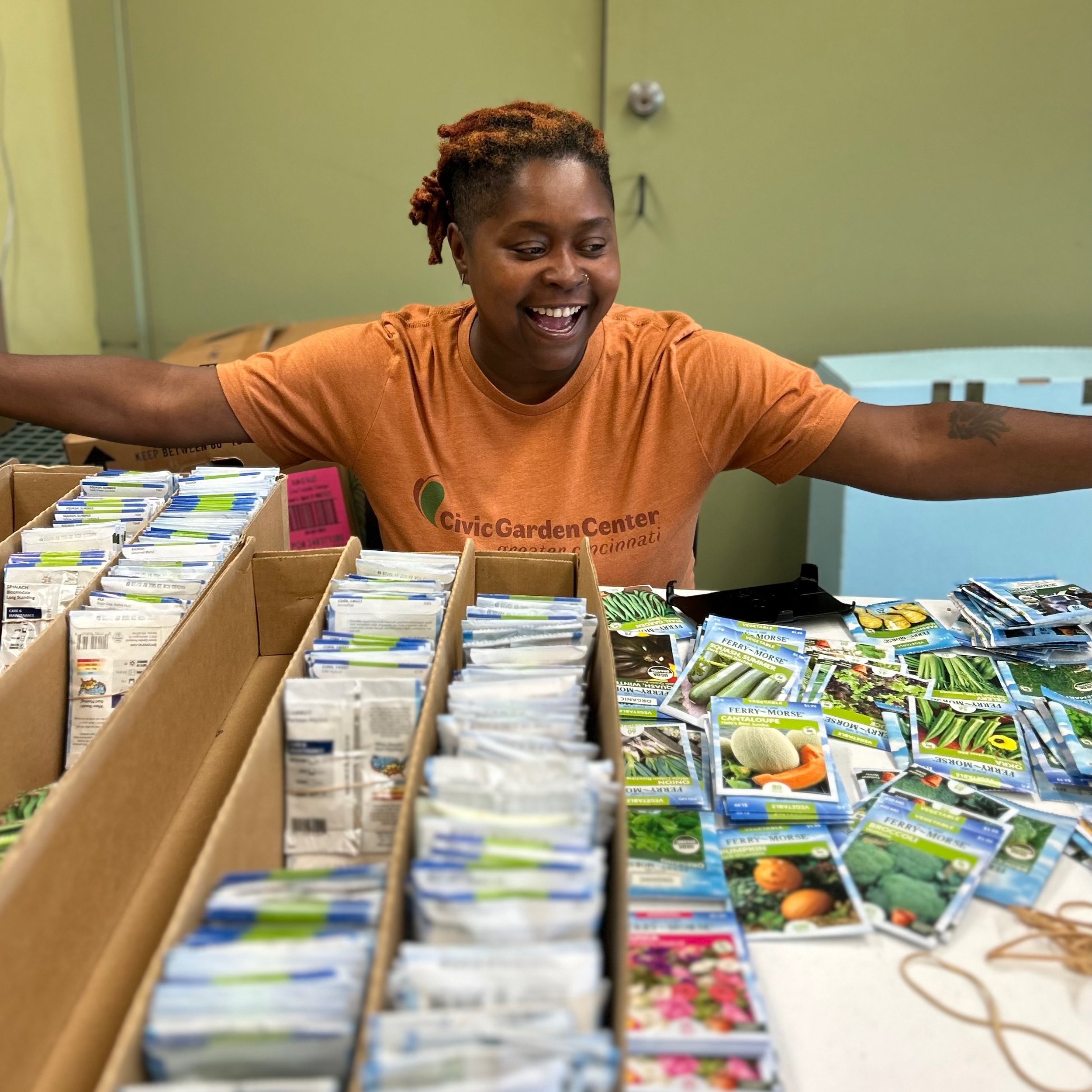Seed Resources
By Kymisha Montgomery, CGC Urban Agriculture Coordinator
‘Tis the season to top up your seed collection…but how do you know what to buy? Here are some tips for success.
Buy from a reputable supplier.
Purchase seeds from a reputable supplier! Most seed companies will not guarantee disease-free seed, but a good seed company will take steps to reduce the chances of seed-borne pathogens.
Some reputable suppliers include: Baker Creek, Johnny’s, Pinetree, Fedco, Seed Savers Exchange, Botanical Interests, True Love Seeds, Sow True Seeds, High Mowing, Stricktly Medicinal and Hudson Valley.
Although growing a completely disease-free tomato in the garden is difficult, if you’re saving seeds for a neighbor or garden buddy, make sure to only save seeds from healthy plants whenever possible. If you think you have received contaminated seed, you have several options of treatment, including the hot water treatment, bleaching treatment, and the hydrogen peroxide treatment.
Pay attention to seed viability.
Check for the seed “packed for” and/or expiration date and any good germination information provided. Knowing the seeds’ viability dates is important, too. They indicate when seeds are guaranteed to germinate and grow healthy. Most seeds will remain viable for a few years after the packed for date, but there are several other factors to consider:
Storage: How long the seeds are stored affects their longevity. Seeds should be kept in a cool dry place.
Species: Different species of seeds have different lifespans.
Quality: The quality of the seed affects its longevity.
Germination Rate: With a seed germination rate under 50-60%, you should buy new seeds. With a 70-90% seed germination rate, sow the seeds more heavily than normal. With a 100% seed germination rate, there’s no need to buy new seeds.
Plan before you buy.
It’s rather easy to go down the rabbit hole when sourcing seeds. That’s why it’s important to have a plan before entering anything into your internet browser or turning the colorful pages of your favorite seed catalog. Take inventory of what you currently have, determine what’s still viable, create your gardening plan–then go shopping from there!

